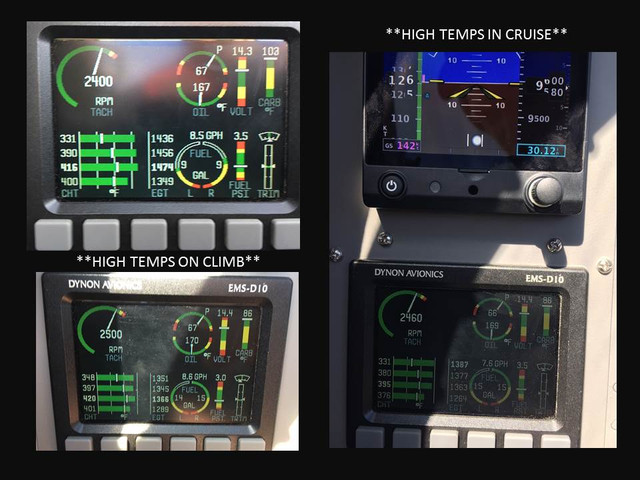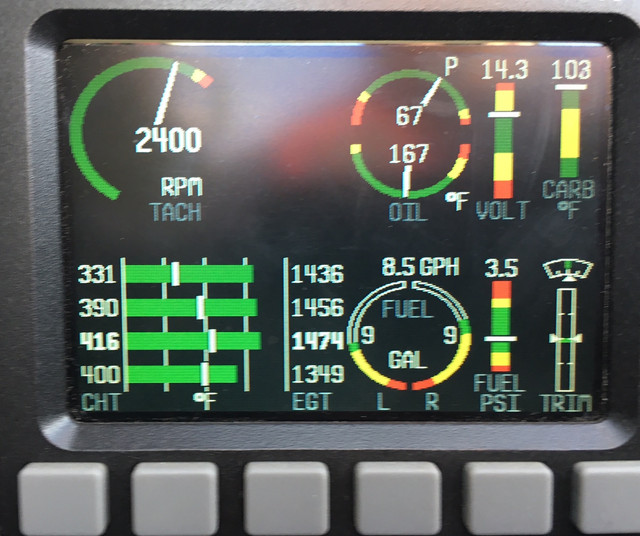WingnutWick
Well Known Member
Hello all,
Just wanted to push out to all of you to see what you guys think about some of the engine issues I have. O-360, fixed pitch, dual P-Mags, Dynon D10 EMS. CYL #3 runs VERY hot even on cold days, even in cruise with CYL 2, 4 not too far behind. CYL 1 runs much cooler than the others. You can see some temps I see on climb and cruise taken on a winter day at altitude. Anything slower than a 100 KT climb will have my #3 CHT shoot to above 430 rapidly.
Also on climb out and WOT I will see my fuel pressure typically drop quickly from a nominal 3-4 PSI to .5 and 0 PSI which sets off the alarm. I've noticed this is often accompanied by an increase in fuel flow. Turning on the electric pump will push these up to 4. Securing the electric pump, the PSI will gradually decrease again to .5-0. Once throttling back to cruise settings the fuel pressure will climb back to nominal.
I am wondering if any of you have any ideas on the fuel flow and the over heating. What's a good way to check the baffles? Are there any good plenums out there for my configuration that has shown good success in cooling so I can do away with worrying about baffles? Searching through the threads it seems adding a washer helps with cooling but I'm not quite sure where that washer is being added....any photos to show this?
Otherwise the motor runs nicely and no noticeable performance issues associated with the drop in fuel PSI.
Any input is greatly appreciated!


Just wanted to push out to all of you to see what you guys think about some of the engine issues I have. O-360, fixed pitch, dual P-Mags, Dynon D10 EMS. CYL #3 runs VERY hot even on cold days, even in cruise with CYL 2, 4 not too far behind. CYL 1 runs much cooler than the others. You can see some temps I see on climb and cruise taken on a winter day at altitude. Anything slower than a 100 KT climb will have my #3 CHT shoot to above 430 rapidly.
Also on climb out and WOT I will see my fuel pressure typically drop quickly from a nominal 3-4 PSI to .5 and 0 PSI which sets off the alarm. I've noticed this is often accompanied by an increase in fuel flow. Turning on the electric pump will push these up to 4. Securing the electric pump, the PSI will gradually decrease again to .5-0. Once throttling back to cruise settings the fuel pressure will climb back to nominal.
I am wondering if any of you have any ideas on the fuel flow and the over heating. What's a good way to check the baffles? Are there any good plenums out there for my configuration that has shown good success in cooling so I can do away with worrying about baffles? Searching through the threads it seems adding a washer helps with cooling but I'm not quite sure where that washer is being added....any photos to show this?
Otherwise the motor runs nicely and no noticeable performance issues associated with the drop in fuel PSI.
Any input is greatly appreciated!


Last edited:




